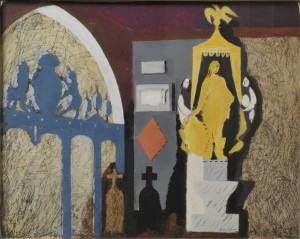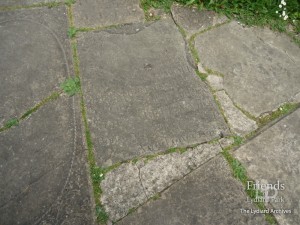Fragments of the Bishop’s Transcripts (copies of the parish registers) for Lydiard Tregoze survive from 1607 with the burial of James Gardiner in May of that year. However, this was not the first burial in the churchyard surrounding the ancient church of St. Mary’s. The churchyard rises up either side of the church path, with steps at the western entrance leading to the south side of the building indicating the significant disturbance of earth to accommodate the vast number of burials that have taken place during 1000 years of worship on this site.
Towards the end of the 19th century it was getting increasingly difficult to manage the churchyard and a vestry meeting in 1880 decided that the site (measuring just 0.7 of an acre) was overcrowded. Members of the vestry appealed to Henry, Viscount Bolingbroke to grant an enlargement of the existing ground, but as might be expected, his Lordship refused.
This was a problem that could not be ignored and a Closure Order was issued by the Privy Council to take effect on April 30, 1886. A proviso was added that burials could continue to take place in existing vaults and wholly walled graves on condition that each coffin should be separately enclosed by stone work or brickwork properly cemented. These conditions enabled three burials to take place in 1887 and one in 1888 and in 1894 those of Edward Plummer and George Ody.
Closure of the churchyard eventually happened in 1887 when the Rev. Baily made a note in the burial register From June 24, 1887 to 26 August 1891 the bodies of Lydiard parishioners were buried in the burial grounds of adjacent towns and villages. This included Martha Hale of Creeches Farm, who died in 1890, and was buried in Radnor Street Cemetery, Swindon. Eventually Lord Bolingbroke offered half an acre of land called Ables at Hook Farm and the new cemetery opened in 1891 with the burial of Mary Molden age 51 on August 26. Rev Baily again noted the event in the burial register – The first funeral in the new burial ground.
There may not be as many surviving memorials in the churchyard as you would expect from 1000 years of burials, but it has to be remembered that many are the unmarked graves of agricultural labourers who could not afford a headstone. There are, however, an incredible 28 Grade II listed chest tombs in St. Mary’s churchyard, including nine to the east of the church, five of which are dedicated to the King family. The prosperous King family trace their ancestry back to the Medieval period and the Kingshill area of Swindon takes its name from them as does the Swindon Primary School Robert le Kyng. The chest tombs in St Mary’s churchyard memorialise family burials dating from Francis King who died in 1745 to Sarah Sheppard King who died in 1896.
The graves of Thomas Kinchin and his wife Maria are tucked into the corner of the churchyard close to the wall that separates Lydiard House and the burial ground. These intricately carved headstones show the remnants of a blue colouring. The chest tomb memorial for Francis King and his wife Ann also reveals it was once decorated with the same blue colouring. Unusual to our gaze now, but what a spectacular sight the churchyard must have been 200 years ago.
Many of the headstone inscriptions are now difficult to decipher but fortunately in 1979 Rev Brian Carne, founder of the Friends of Lydiard Tregoz and former Rector at St Mary’s, published a survey of the graves in both the churchyard and Hook Cemetery. Even then, some of the inscriptions were illegible, including gravestones that had been previously recycled to make the church path. A model of the church made in around 1840 and included in this collection, gives an impression of just how many gravestones could once be seen.












